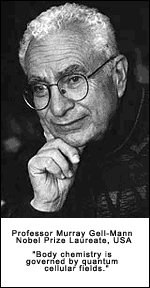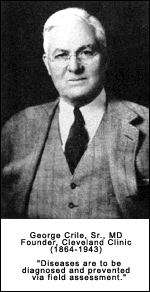The FCT® Curriculum – A Brief Overview

I. Homeostasis from the point of view of atomic biology.
II. The set of multiple pernicious factors which disrupt it. Toxicological and infectious agents, physical and emotional traumas, geomagnetic and man-made fields, dietary and medical interventions, and others. Some main genetic factors, constitutional predispositions, and the means to address them, are presented also.
III. The progressive stages of the cellular destructions induced by the pernicious factors.
IV. Analysis of the benefits and limitations of all of the major alternative and conventional diagnostic approaches.
V. Analysis of the benefits, limitations and potential side-effects of all of the major alternative and conventional therapeutic approaches.
This part of the curriculum explains the benefits of the therapies as it points out the exact corresponding components within the homeostatic energetic-biochemical model upon which they act.
It demonstrates, just as clearly, the shortcomings when the other components remain ignored or the pernicious factors overlooked. This explains the erratic outcomes in the care of chronic diseases as most successes usually take place while still in the less advanced stages of pathology.

VI. Limitations of the contemporary Bio-medical research models, conventional and alternative.
VII. Means of effective evaluation of the claims of some therapeutic or diagnostic approaches and, likewise, of the new diagnostic or medicinal products. This will spare the students from unnecessary acquisitions, expense, lost time, and patients’ dissatisfaction.
VIII. Practical patients’ workup. FCT® System of Diagnosis and Therapy.
1. The main diagnostic methods:
Bio-resonance testing, anamnesis, physical examination and constitutional evaluation.
— Unique Features —
a) zeroing in on the key toxins
b) ascertaining multiple organs and systems affected
c) identifying several layers of toxic deposits within the same organ or tissue
2. Therapeutic approach:
a) understanding the main therapeutic priorities
b) utilization of the deepest energetic modality of all – homeopathy with the main emphasis on causative homeopathy, and rendering concurrent robust homeopathic organ support
c) a novel method of administering remedies
d) classical homeopathy, only as necessary, to address deep miasmatic (genetic) states or emotional traumas
e) selective use of glandular-organ preparations to facilitate tissue repair concurrently with the removal of causative factors
f) Auxiliary support, as needed, of other modalities, according to patient’s individual needs
3. Unparalleled clinical and cost effectiveness.
In summary, the FCT curriculum provides a wealth and considerable depth of information. From the experience of many of our students, the Basic and Advanced DVD courses provide an excellent source for clear and effective learning. The E-letter, produced a few times a year, is replete with the detailed management and analysis of the most challenging patients representing hundreds of different pathologies literally from head to toe.
The live seminars are reserved for clinical updates, dynamic information exchange and further evolvement of one’s skills in this fascinating system of medicine.
The European study group conducts periodic hands-on workshops which are visited with enthusiasm by even some of our American students. The same training format is being introduced in the U.S.
All of our students have found this educational format as the most productive and very cost effective. It is conducive to fast learning and to achieving maximum growth in the shortest time possible while sacrificing barely any work time.
To learn more or to order, please visit the Books and Media section of this website.
